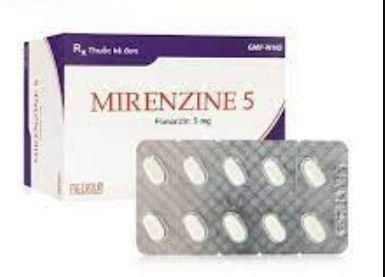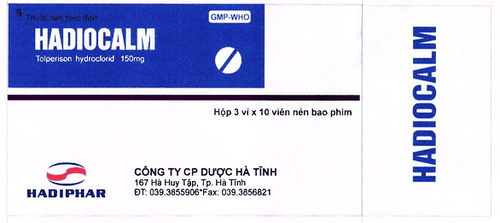This is an automatically translated article.
Botulinum toxin can be toxic to the body, but it is used in the treatment of some muscle spasticity or dystonia. Among them is Botulinum toxin type A found in Xeomin drug. So what is Xeomin and how does it work?
1. What is Xeomin and how does it work?
Xeomin has ingredients including:
Main active ingredients: Botulinum toxin type A; Some inactive ingredients such as Human Albumin and sucrose The Xeomin drug is a prescription product. Depending on the usage will have different effects. Xeomin, when injected into the salivary glands, is used to treat chronic hypersalivation in adults and children 2 to 17 years of age. When injected into the muscle, Xeomin drug brings the following effects:
Treatment of arm muscle spasticity caused by spastic upper limb spasticity in adults; Treatment of spasticity of the brachial muscles in children aged 2 to 17 years with spastic upper limb spasticity, except in cases of cerebral palsy; Treatment of torticollis and cervical dystonia in adults; Treatment of blepharospasm in adults. However, the safety of Xeomin is unknown when used in children in the following cases:
Children under 2 years of age need treatment for chronic diseases; Children 2 years old need treatment for spasticity of the upper extremities; Children under 18 years of age need treatment for cervical dystonia or eyelid spasms.
2. Some warnings when using Xeomin
The use of Xeomin can cause some serious life-threatening problems. Patients should call their doctor immediately if they have any of the following:
Swallowing disorders, difficulty speaking or breathing due to weakness of the muscles responsible for these activities. Death can occur when patients have difficulty swallowing or breathing after treatment with Xeomin; Patients who already have certain breathing problems may need to use their neck muscles to assist with breathing, so are at greater risk of serious breathing problems while using Xeomin; Swallowing problems can persist for several months, so a nasogastric tube may be needed to assist with eating. If swallowing problems become severe, food or water can enter the lungs and pose a health hazard. People with a history of difficulty swallowing or breathing are most at risk for this side effect; Toxin contagion effect: In some cases, Botulinum toxin can affect organs far from the injection site, thereby causing symptoms of a serious condition known as Botulism poisoning. with symptoms such as loss of strength and general weakness, double vision, blurred vision and drooping eyelids, hoarseness, voice change or loss, difficulty speaking, loss of bladder control, difficulty breathing, difficulty swallowing. These conditions can occur several hours to several weeks after the patient has injected Xeomin. They may therefore be unsafe when the patient is driving or performing other hazardous activities.
Contraindications of Xeomin:
Patients who are allergic to Xeomin or any of the ingredients in the drug; Patients with a history of allergy to any other Botulinum toxin-containing products such as Rima Botulinum Toxin B (Myobloc ®), OnaBotulinumToxinA (Botox ®) or Botoxin A (Dysport ®); The patient had a skin infection at the site of Xeomin injection.
3. Matters needing attention before using Xeomin
During the use of the drug, the patient needs to pay attention to the following issues:
Patients with diseases affecting muscle and nerve function (such as amyotrophic lateral sclerosis, weakness, etc.) Lambert-Eaton syndrome; Patients with a history of side effects from taking any other Botulinum toxin; Patients with breathing problems, such as asthma or emphysema; Patients with a history Difficulty swallowing or aspiration pneumonia; Patients with drooping eyelids, eye surgery or facial surgery; Patients who are pregnant or planning to become pregnant because the potential for Xeomin to affect the fetus is unknown. nursing or planning to breastfeed, as it is not known whether Xeomin passes into breast milk; Inform your doctor about all medications you are taking, including prescription and over-the-counter medicines, vitamins and At the same time, patients while taking Xeomin should talk to their doctor before starting any other medicine. eomin with some other medicines can cause serious side effects, so do not start any new medicines without your doctor's approval. In particular, inform the doctor if the patient has the following:
Has used any other Botulinum toxin product within the past 4 months; Having injected Botulinum toxins such as RimabotulinumtoxinB (MYOBLOC ®), OnabotulinumtoxinA (BOTOX ®) and AbobotulinumtoxinA (DYSPORT ®) in the past; Recent use of injectable or inhaled antibiotics; Use muscle relaxants, anti-allergy or cold medicines, and sedatives.
4. Side effects of Xeomin
Xeomin can cause serious side effects including:
Corneal damage in patients being treated for blepharospasm. Patients using Xeomin in this situation may experience reduced blinking, corneal pain or other problems of the cornea. Patients should contact the treating doctor or go to the hospital immediately if they experience pain or eye irritation after treatment with Xeomin; Xeomin can cause other serious side effects including allergic reactions. Symptoms of an allergic reaction to Xeomin may include itching, rash, hives, swelling, wheezing, trouble breathing, dizziness or fainting. Patients should contact their doctor or seek medical attention immediately if they are wheezing or having trouble breathing, dizzy or faint. The most common side effects of Xeomin in adults with chronic hypersalivation include:
Need for tooth extraction; Dry mouth; Diarrhea; High blood pressure The most common side effects of Xeomin when used in children 2 to 17 years of age with chronic hypersalivation include:
Bronchitis; Nausea; Headache; Vomiting. The most common side effects when using Xeomin to treat spastic upper extremities in adults include:
Bronchitis; stuffy nose, sore throat and runny nose; Dry mouth; Acute respiratory failure. The most common side effects of Xeomin in children 2 to 17 years of age requiring treatment for spasticity of the upper extremities include:
Nasal congestion, sore throat and runny nose; Bronchitis. The most common side effects when using Xeomin to treat cervical dystonia in adults include:
Difficulty swallowing; Neck pain; Muscle weakness; Pain at the injection site; Muscle and bone pain. The most common side effects of Xeomin when treating eyelid spasms in adults include:
Eyelid ptosis; Dry eyes; Vision problems; Dry mouth . Xeomin drug has the main ingredient is Botulinum toxin type A. The drug is indicated for the treatment of some diseases of muscle spasticity or dystonia. To ensure the effectiveness of treatment and avoid unwanted side effects, patients need to take the medicine according to the instructions of the doctor, specialist pharmacist
Follow Vinmec International General Hospital website to learn more health, nutrition and beauty information to protect the health of yourself and your loved ones in your family.
Please dial HOTLINE for more information or register for an appointment HERE. Download MyVinmec app to make appointments faster and to manage your bookings easily.
Reference sources: xeomin.com, drugs.com













